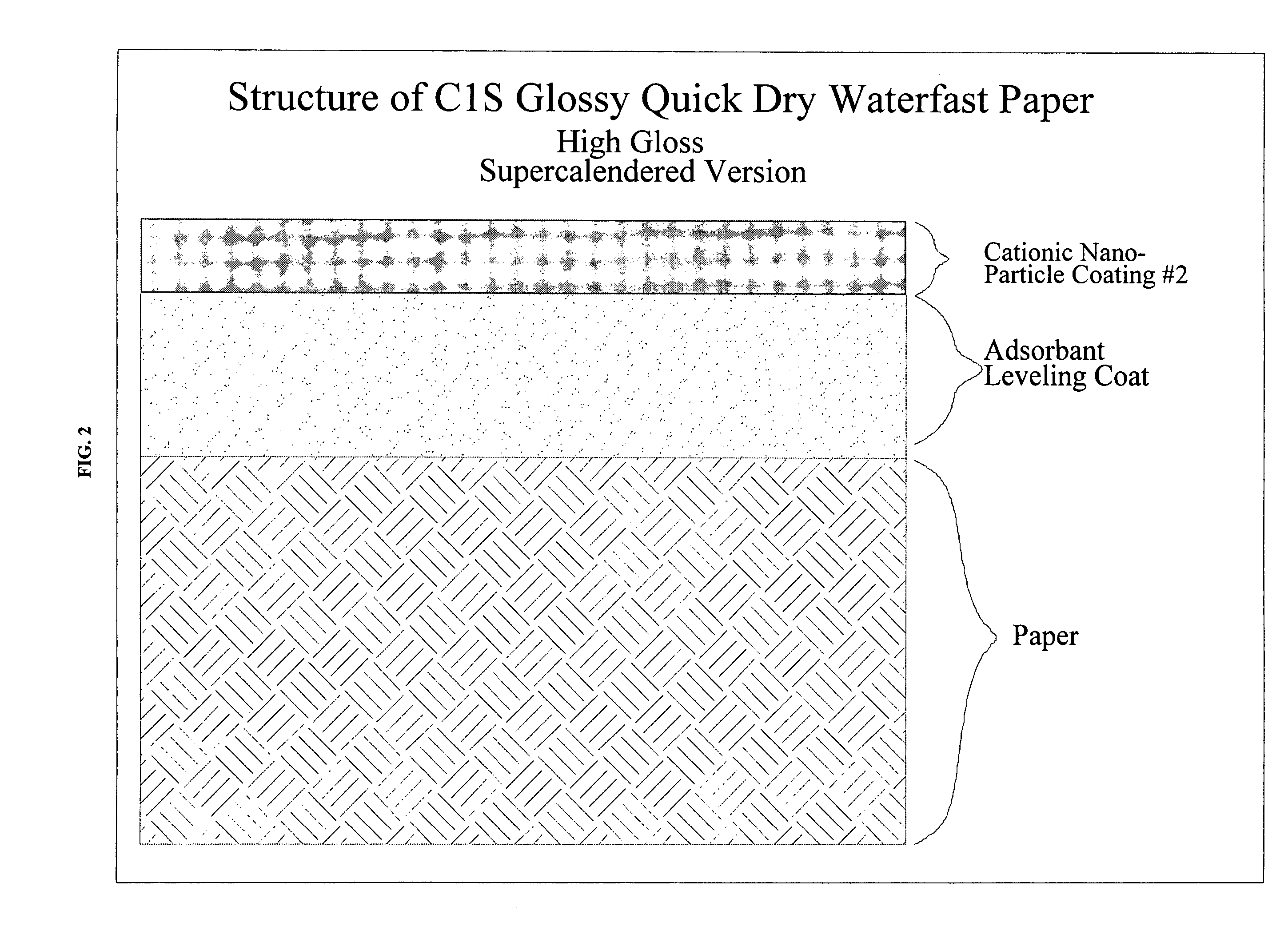Quick drying, waterfast inkjet recording media
a technology of inkjet printing media and fast drying, applied in the field of recording media, can solve the problems of slow drying of inkjet paper and film available today, affecting the quality of inkjet printing, etc., and achieves the effect of not being susceptible to smearing and high quality
- Summary
- Abstract
- Description
- Claims
- Application Information
AI Technical Summary
Benefits of technology
Problems solved by technology
Method used
Image
Examples
examples
[0036] The following compositions, articles, and methods are exemplary of the present invention. The exemplary embodiments are to be considered in all respects only as illustrative and not restrictive. Additional embodiments of the present invention comprise any combination of the base coating, ink-receptive coating, or glossy top coats to produce a substrate having multiple layers on either or both sides, yielding quick drying, waterfast ink-jet recording media.
Material% Dry WeightDescriptionFormulation #1 - Cationic Nanoparticle Ink Receptive CoatingPVP / VA Copolymer W63515.15%BinderGlycerin 5.71%HumectantBYK 032 (defoamer) 1.14%DefoamerCatapal 200 Alumina60.58%PigmentSylojet 710C15.14%PigmentOptiblanc KLN (optical brightener) 1.56%Optical BrightenerTriton X-100 (surfactant) 0.72%SurfactantFormulation #2 - Cationic Nanoparticle Ink Receptive CoatingPVP / VA Copolymer W635 14.6%BinderGlycerin 5.5%HumectantBYK 032 (defoamer) 1.1%DefoamerCatapal 200 Alumina 58.4%PigmentSylojet 710C 14...
PUM
| Property | Measurement | Unit |
|---|---|---|
| surface area | aaaaa | aaaaa |
| particle size | aaaaa | aaaaa |
| particle size | aaaaa | aaaaa |
Abstract
Description
Claims
Application Information
 Login to View More
Login to View More - R&D
- Intellectual Property
- Life Sciences
- Materials
- Tech Scout
- Unparalleled Data Quality
- Higher Quality Content
- 60% Fewer Hallucinations
Browse by: Latest US Patents, China's latest patents, Technical Efficacy Thesaurus, Application Domain, Technology Topic, Popular Technical Reports.
© 2025 PatSnap. All rights reserved.Legal|Privacy policy|Modern Slavery Act Transparency Statement|Sitemap|About US| Contact US: help@patsnap.com



